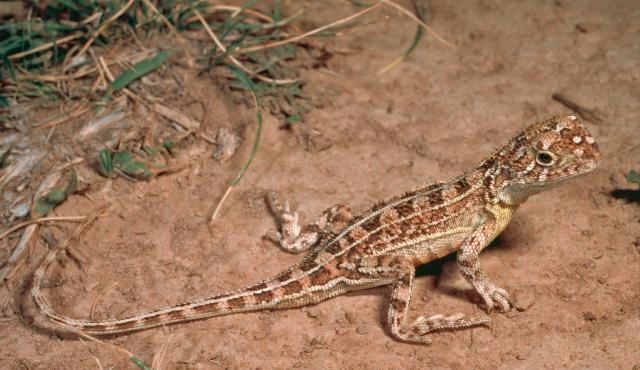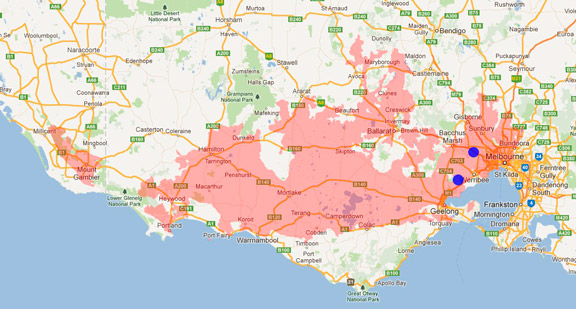A range of teacher professional learning programs will be developed to accompany the Biodiversity of the Western Volcanic Plains online outreach...


Grassland Earless Dragon
Tympanocryptis pinguicolla
Oviparous (egg laying). Believed to lay eggs in a specially constructed nest burrow.
| Details | Description |
| Type | Reptile |
| Group | Lizard |
| Other Common Names | Southern Lined Earless Dragon |
| Identifying Characteristics | |
| Distinctive Markings | Tympanum (ear opening) is covered by skin and not visible. |
| Diet | Carnivore. Grassland invertebrates including grasshoppers, beetles, crickets and spiders. |
| Habitat | Areas of rocky native grass dominated by Wallaby grass, Tussock grass and Spear-grass. Tree and shrub cover is sparse or absent. Found sheltering in burrows or under rocks. |
| Native Status | Native to Australia |
| Taxonomy | |
| Phylum | Chordata |
| Class | Reptilia |
| Order | Squamata |
| Family | Agamidae |
| Genus | Tympanocryptis |
| Species | pinguicolla |

Distribution maps indicate current and historic locations where species have been sighted.
Source: Atlas of Living Australia
| Conservation Status | |
| DEPI Advisory List | Critically endangered |
| FFG Act | Listed as threatened |
| EPBC Act | Endangered |
| FFG Action Statement |
The conservation status of species is listed within Victoria and Australia.
The Department of Environment and Primary Industry (DEPI) Advisory List consists of non-statutory advisory lists of rare or threatened flora and fauna within Victoria.
The Flora and Fauna Guarantee Act 1988 (FFG Act) lists threatened species in Victoria. Under the Act, an Action Statement is produced for each listed species.
The Environment Protection and Biodiversity Conservation Act 1999 (EPBC Act) is the Australian Government’s key piece of environmental legislation, listing nationally threatened native species and ecological communities.



